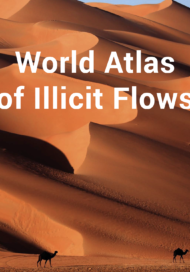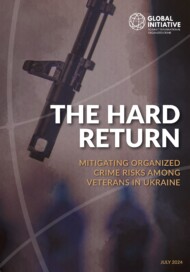Posted on 17 Feb 2020
Italian law-enforcement efforts, the presence of new, foreign criminal networks in Sicily and internal instability have weakened the Sicilian Cosa Nostra as its bosses try to reorganize the mafia group.
In July 2019, investigations carried out by Italy’s anti-mafia investigative directorate (the Direzione Investigativa Antimafia – DIA), led to the arrest of 19 mafia suspects. The drive was part of New Connection, an operation conducted jointly by the Italian police and the FBI’s New York bureau.
New Connection came a year after Cupola 2.0, a 2018 investigation that seriously dented Cosa Nostra, with the arrest of 46 prominent bosses. Such a high number of arrests in a short period of time has allegedly prevented the criminal network from settling decisive matters. Evidence from the wiretapping deployed extensively during the recent joint investigations shows a destabilized Cosa Nostra as bosses attempt to establish new leadership structures.
New Connection and the earlier Cupola 2.0 seem to have had a bigger impact than previous anti-mafia operations, with the police managing to hit both Sicilian and Sicilian-American affiliates trying to restructure Cosa Nostra’s so-called ‘cupola’. Derived from the Italian for a dome that crowns a building, the cupola is a structure formed by the heads of independent Cosa Nostra families. This high-level committee makes decisions on important issues, such as those targeted for assassination and structural changes in the organization.
Recently, the media have reported on how Cosa Nostra’s power has been dwindling and, as a consequence, how the weakened group has been losing its grip on Sicily’s lucrative illicit markets. Allegedly, the DIA’s focus on breaking the Cosa Nostra has left the playing field open for Romanian, Albanian, and especially Nigerian gangs, to make inroads into former mafia territory, mainly in its two largest cities, Palermo and Catania. As a result, large tranches of the drug-trafficking, prostitution and migrant-smuggling markets across the central Mediterranean route are now controlled by such foreign nationals – a scenario that would have been unthinkable during the 1980s heyday of Cosa Nostra, when they held a virtual monopoly over the Italian criminal scene.
Police operations and the presence of foreign networks are, however, only partially the reason for Cosa Nostra’s decline. The death of the Corleonesi clan boss, Totò Riina, in 2017, the group’s ferocious and authoritative capo for more than three decades, left a significant governance vacuum that erstwhile successors have struggled to fill.
The Corleonesi clan (who hail from the eponymous town of Corleone) started out in the 1970s and expanded their area of influence towards Palermo, Sicily’s largest city. In spite of their notorious propensity for brutality, the Corleonesi were initially underestimated and dismissed as rural peasants by the bosses of the Palermo-based mafia families who, by contrast, enjoyed the patronage of politicians and elements of Sicilian high society.
They overlooked the Corleonesi at their peril, however, because, under Riina, the Corleonesi launched what some have dubbed the second mafia war. This was a series of killings within Cosa Nostra carried out between 1981 and 1983, after which the Corleone clan, led by Riina, Bernardo Provenzano, and Leoluca Bagarella, stepped into the commanding role of the Sicilian Cosa Nostra.
The remaining families were forced to either submit to the Corleonesi or flee. Several of them, such as the members of the powerful Inzerillo family, abandoned the Cosa Nostra and sought asylum in Sicilian-American mob-allied families.
That conflict led to the long-lasting domination of Cosa Nostra by the Corleonesi, one that remained unchallenged until Riina’s arrest and imprisonment under solitary confinement in 1993, though he managed to retain considerable authority through proxies. It was not until his death that the battle to control the cupola of the Cosa Nostra began in earnest.
A clear authority figure is crucially important to a top-down organization like Cosa Nostra. A mafia network divided by internal conflicts and disconnected clans cannot guarantee the safety of their businesses, maintain the constitution of the group intact, function as a solid counterforce to other criminal networks, or resist police pressure. But no single capo has yet emerged.
Among those loyal to the Corleonesi is Settimo Mineo – a boss believed to be the de facto head of Cosa Nostra – who has many times tried (until his arrest) to set up a dialogue with the US-based members of the powerful Inzerillo family, and specifically with Francesco Inzerillo, whose brother was killed by Riina in 1981.
But also waiting in the wings are other notorious Corleonesi: Leoluca Bagarella and the Graviano brothers (currently imprisoned), and, more importantly, Matteo Messina Denaro and Giovanni Motisi. Messina Denaro and Motisi are, respectively, number one and two on the list of most wanted fugitives in Italy. Investigators lost track of Motisi a decade ago, so assessing the credibility of his bid for power is difficult. Messina Denaro, who has a stronghold in Palermo, and his interests would have to be accommodated in any eventual brokered resolution.
With the primary goal of stemming the organization’s decline, bosses from all over the island have tried to build bridges between the many Cosa Nostra factions and put to rest long-standing disputes. Investigations also show how renowned bosses historically loyal to the Corleonesi, together with young and powerful gangsters, such as Leandro Greco (grandchild of historic godfather Michele Greco), have attempted to form partnerships with old enemies, such as Giovanni Buscemi, a rival boss sponsored by the Inzerillo family.
But the process of reconciliation between these factions, whose rivalry goes back many years, has been slow and tenuous, and neither a new unifying authority figure nor solid consensus has yet emerged within the cupola. Meanwhile, Cosa Nostra’s operations continue to be eroded by foreign organized-crime groups, who are consolidating and expanding into the power vacuum the fractured Cupola has left.
It is clear from the ongoing investigations that Cosa Nostra is in a delicate phase, and the next moves by some of the prominent candidates for the top position of capo will need to be carefully monitored. While it is certainly too soon to declare the power of the Sicilian mafia as obsolete, continued decisive state intervention may be able to permanently divide and conquer Cosa Nostra’s mythical unity.



